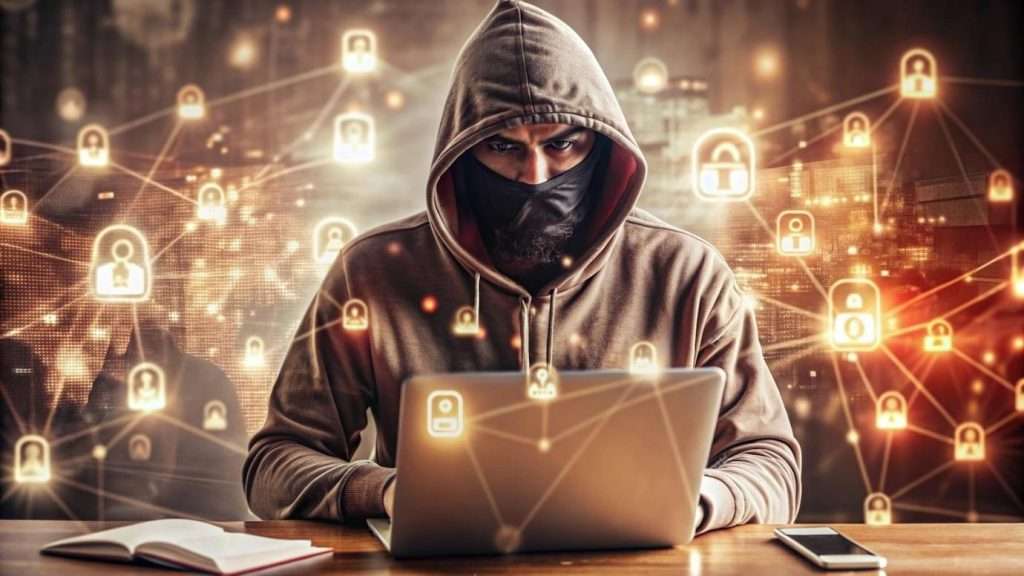In mid-2024, Disney became the latest corporate giant to fall victim to a massive cyberattack. This breach exposed the vulnerability of even the most seemingly secure organizations, sending shockwaves across the cybersecurity industries.

Hacktivist group NullBulge claimed responsibility for the breach, leaking 1.1 terabytes of internal Slack communications. This event raises significant concerns about corporate data protection, especially for industries handling vast amounts of sensitive information.
This article delves into the details of Disney’s massive data leak, the implications for cybersecurity in 2024, and how businesses and individuals can protect themselves moving forward.
What Happened: A Closer Look at the Disney Data Breach
In July 2024, Disney suffered a significant cyberattack, resulting in a leak of over 1.1 TB of data from its internal Slack channels. The data breach included everything from unreleased projects to raw images, employee communications, internal codes, and API links, sparking concerns about how much of Disney’s corporate operations were compromised.
The attackers, identified as part of a hacktivist group named NullBulge, reportedly targeted Disney as part of a protest against AI-generated artwork. According to sources, NullBulge justified the attack as an effort to protect artists’ intellectual property from what they consider theft through AI-generated content. Despite the group’s claims, many experts argue that the breach likely had deeper motivations, including potential financial or political exploitation.
The Cybersecurity Outlook in 2024: Are We Prepared?
Disney’s breach is just the latest in a string of high-profile cyberattacks affecting global corporations in 2024. With data leaks on the rise, organizations must reassess how they manage their digital security. Disney, like many companies, relied heavily on internal communication platforms such as Slack, which proved to be an entry point for the attack.
In this case, Disney’s internal Slack system allowed attackers to access sensitive data and communications, exposing vulnerabilities in how organizations handle digital tools. This attack has led cybersecurity experts to issue warnings that businesses need to invest more heavily in securing communication platforms, especially those integrating APIs, file sharing, and authentication systems.
Why Slack Became the Target
Slack, a widely used workplace communication tool, has been known to carry cybersecurity risks. Once an attacker gains access to an employee’s Slack account, they can infiltrate numerous channels, accessing confidential information. In Disney’s case, the hackers reportedly breached more than 10,000 channels, pulling a treasure trove of sensitive data.
Slack’s vulnerabilities stem from a variety of issues, including:
- Weak Password Policies: Users often reuse passwords across multiple platforms, making it easier for hackers to use phishing or brute-force attacks to compromise accounts.
- Credential Theft: Hackers can steal login credentials through phishing scams, social engineering, or exploiting poorly secured databases.
- API Exploitation: Once inside Slack, attackers may exploit unsecured API integrations to access deeper levels of internal data.
These weaknesses have made Slack a prime target for hackers, underscoring the importance of strengthening security protocols within organizations.
Implications for the Entertainment Industry and Beyond
The entertainment industry, like many sectors, has become increasingly reliant on digital communication and collaboration tools. Disney’s breach highlights the risks associated with the widespread adoption of such tools without adequate cybersecurity measures. The leaked data included unreleased projects, which could damage Disney’s competitive edge in an industry where intellectual property is king.
Beyond the entertainment sector, this breach is a stark reminder for all industries to take proactive steps in securing their digital assets. Data breaches can lead to financial losses, reputational damage, and legal repercussions. As more businesses embrace remote work and cloud-based solutions, the threat landscape expands, and attackers are becoming more sophisticated.
The Rise of Hacktivism: What’s Driving These Attacks?
NullBulge’s attack on Disney is part of a larger trend of hacktivist-driven data breaches. These cybercriminals claim to have ideological motives, such as fighting against AI-generated artwork or cryptocurrency platforms. While some might view these attacks as protests, the reality is that hacktivists often use these operations to create chaos or for personal gain.
In the case of Disney, the hacktivists framed their attack as a stand against corporate theft of intellectual property. However, experts warn that hacktivist groups may have more complex motivations, including political agendas or financial demands. Some analysts speculate that the breach could also be part of a larger effort to blackmail Disney, similar to the infamous Sony hack of 2014.
What Does This Mean for Cybersecurity in 2024 and Beyond?
The Disney data leak is a wake-up call for businesses to rethink their approach to cybersecurity. As attackers become more sophisticated, organizations need to stay one step ahead. The breach underscores several key lessons for the future of cybersecurity:
- Multi-Factor Authentication (MFA) is Crucial: Companies must enforce MFA across all digital platforms, especially internal communication tools like Slack. This adds an extra layer of protection, making it harder for hackers to gain access.
- Regular Security Audits Are a Must: Regular audits of internal communication tools and APIs can help identify and address vulnerabilities before they are exploited.
- Data Encryption: Sensitive information should always be encrypted, both at rest and in transit. This ensures that even if data is stolen, it cannot be easily accessed by hackers.
- Educating Employees: Human error remains one of the most significant risks in cybersecurity. Regular training can help employees recognize phishing attempts, avoid weak passwords, and understand the importance of following security protocols.
- Zero Trust Framework: Adopting a zero-trust security model, where no one inside or outside the organization is trusted by default, can help prevent unauthorized access to sensitive systems.
Steps Organizations Can Take to Protect Themselves
To avoid becoming the next Disney, organizations should consider implementing the following steps:
- Strengthening Access Controls: Limit access to sensitive information on a need-to-know basis, ensuring that only authorized personnel can view or interact with it.
- Monitoring and Logging: Comprehensive logging of user activities within communication platforms can help detect suspicious behavior early on.
- Data Loss Prevention Tools: These tools can prevent unauthorized sharing of sensitive data by scanning for potential leaks and blocking risky actions.
- Collaboration with Cybersecurity Experts: Companies should work with experts to continuously evaluate and improve their security measures, particularly as new threats emerge.
Conclusion: The Future of Cybersecurity
Disney’s massive data leak serves as a critical reminder of the evolving nature of cybersecurity threats. As technology advances, so do the methods used by attackers. The breach has exposed weaknesses in corporate communication platforms, emphasizing the need for stronger security measures across all industries.
Looking ahead, organizations must prioritize cybersecurity, not only to protect their intellectual property but also to safeguard their customers, employees, and stakeholders. By adopting proactive measures and fostering a culture of cybersecurity awareness, companies can stay ahead of the curve and reduce their risk of falling victim to similar attacks in the future.















